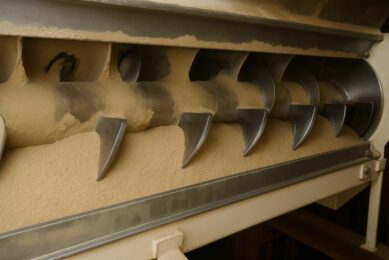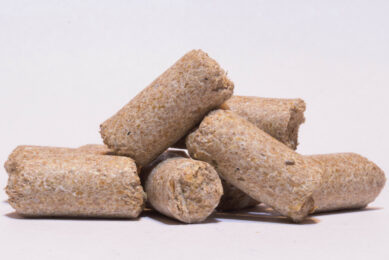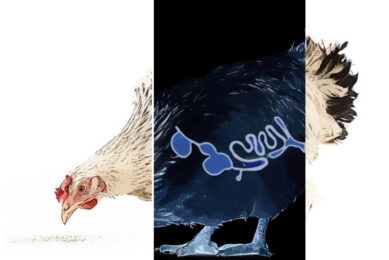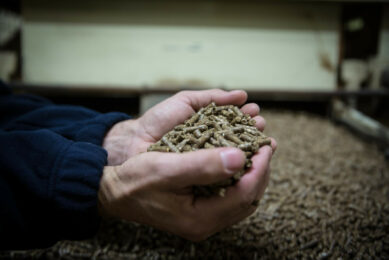Effect of heat treatment and feed acidification on feed quality and salmonella
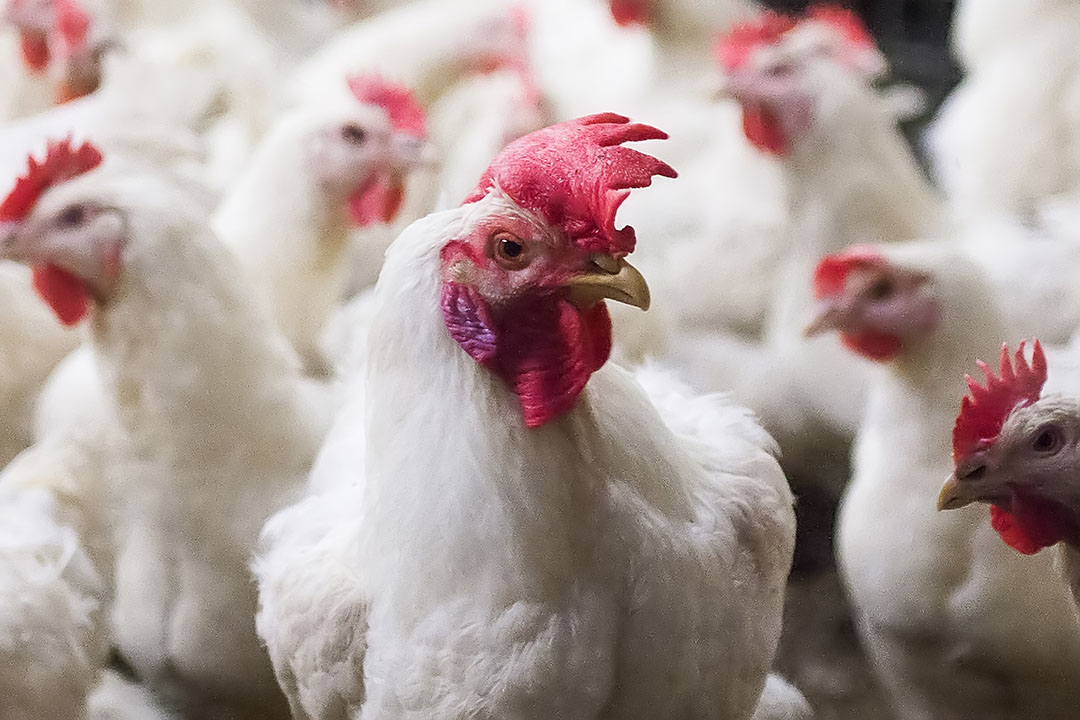
Salmonella is a heat sensitive bacteria, so heat treatment of feed during preconditioning has become standard practice to improve feed hygiene. The dilemma with this strategy is that pelleting offers no protection against recontamination of feed.
Davies and Wray (1997) conducted a study in the UK where almost 3,100 samples of spillage and dust were taken and isolated for salmonella prevalence at various places and time points in 9 feed mills. A wide range of salmonellas were isolated, including S. typhimurium S. enteritidis, with the lowest prevalence measured directly after pelleting. The highest salmonella prevalence was found in the post pellet and crumble coolers. This indicates that even though pelleting may be a good sterilisation technique, the moment the feed leaves the pelleting press it is most likely to be recontaminated in the cooler(s).
Preventing recontamination
In a recent study (described here), heated mash and pellets of the same feed were reinoculated with salmonella and its prevalence measured over a 2-week period. Pelleting offered very little extra protection over mash, with significantly lower levels of salmonella in pellets only measured at day 7 of storage over mash. In large integrated pig and poultry operations, most feed will be consumed by day 7, which suggests a chemical intervention may be useful to prevent recontamination by constantly inhibiting/killing salmonella. The pelleting of feed with steam leads to gelatinisation of the starch components in the grain, which contributes to higher durability of pellets. Feeding pelleted diets lead to less feed wastage, improved ease of handling, and more efficient feed utilisation. Some of this improvement is due to physio-chemical changes brought about by heat, moisture and pressure during the pelleting process, but a significant part of the improved feed efficiency is due to birds spending less time eating pellets, so there is a direct reduction in energy required by the bird (Leeson, 1997). This is clear from classical work done in 1962 by Jensen et al., showing that chickens spent on average 3 times longer eating the same amount of mash in a 12-hour day than when offered the same amount as pellets.
Conditioning temperatures
Leeson suggests a pelleting temperature of up to 88°C, “without any major fear of vitamin destruction or decreased bird performance”. Commercial feed mills are currently running conditioning temperatures of 80 to 90°C that results in final pellet temperatures of approximately 85 to 95°C.
Reasons cited are:
- feed hygiene,
- increased throughput
- improved pellet durability
- improved feed digestibility
One major pelleting machine manufacturer mentions in its marketing material that the heat generated during conditioning and pelleting “makes the feedstuffs more digestible by breaking down the starches”. Recent work from Massey University in New Zealand and elsewhere suggest otherwise, namely that heat treatment of feed does improve pellet durability, but this comes at the expense of nutrient digestibility. Abdollahi et al. reported in 2011 that by differentiating the effects of conditioning temperature from feed form, high conditioning temperatures per se adversely influenced nutrient digestibility and energy utilisation in wheat-based diets. Loar II et al. (2014) found that increasing conditioning temperatures from 74°C to 85°C and 96°C in a maize-soya bean diet, the digestibility of some amino acids decreased by 3 to 5% and FCR was impaired by 3 and 8 points, respectively.
Abdollahi (2013) showed that alternative strategies do exist whereby pellet durability can be increased with low heat conditioning temperature. These strategies include added moisture to the feed, the use of a pellet binder (although to a lesser extent), as well as reducing pellet diameter and increasing pellet length.
2-part study conducted
Lowering the conditioning temperature raises concern about feed sterilisation. Since pelleting temperatures have been increasing over the last few decades in the name of improved feed hygiene, pellet durability and nutrient digestibility, it was decided to conduct a two-part study to investigate:
- If salmonella is killed at low conditioning temperatures.
- If the addition of an acidifier (a buffered formic acid, Amasil® NA) could improve the pellet durability index (PDI).
- Whether salmonella prevalence after recontamination is reduced by acidification.
- If high heat treatment of feed results in lowered nutrient digestibility and 5) if lower conditioner temperatures with acidification could be a strategy to maintain feed hygiene and nutrient digestibility.
Part 1
Microbiology (Jendza et al., 2018) conducted at KSU in the US on a wheat-soya bean meal broiler diet investigated the interaction between feed acidification and conditioning temperatures, as they both pertain to feed hygiene based on salmonella recovery over time. Mash diets were enriched with salmonella, heat treated at 60°C, 75°C and 90°C with 45 seconds conditioning time, treated with 4 levels of a feed acidifier at 0, 4, 7, and 10g/kg, and then pelleted. The pellets were then recontaminated with salmonella and its prevalence measured over a 2-week period. The results showed that pelleting, regardless of conditioning temperature, was sufficient to eliminate all salmonella from the feed. Acidification was effective regardless of feed form or conditioning temperature of pellets. From this study it can be concluded that acidifying with buffered formic acid can be a complementary tool for promoting feed hygiene.
Part 2
A digestibility and performance (Abdollahi et al., 2018) study was conducted at Massey University in New Zealand with the same feed mixture used in part 1, but in part 2 – 2 levels of acidifier were used in the mash diets at 0 and 7g/kg, and 3 levels of acidifier in the pelleted feed at 0,7 and 10g/kg. 3 conditioning temperatures were used for both mash and pellets – at 0°C, 60°C and 90°C with a 30 second conditioning time, fed to male Ross 308 broilers. The results showed that conditioning at 90°C had a consistent positive effect on PDI. The addition of an acidifier had no additional effect on PDI when feed was conditioned at 90°C, but including the acidifier in a cold pelleted feed (60°C) improved the PDI by 9% and 11% at 7 and 10g/kg inclusion rates, respectively (Figure 1). A very strong interaction between acidifier and conditioning temperature was also observed. Neither the main effects nor the interaction between conditioning temperature and acidifier inclusion were significant for weight gain or feed gain. The acidifier had a tendency (P = 0.066) to increase feed intake of the pelleted diet at 10g/kg. Inclusion of an acidifier consistently improved the digestibility of dry matter, phosphorous, nitrogen, fat and starch and high heat treatment reduced the digestibility of dry matter, starch, fat and calcium.
In conclusion
The findings from this work demonstrate that feed acidification benefits nutrient digestibility in pelleted broiler diets and confirms that high conditioning temperatures reduce nutrient digestibility. A case can be made from this and other recent studies that current commercial pelleting temperatures may be unnecessarily high from a feed hygiene perspective, and lower heat treatment with inclusion of an acidifier at appropriate inclusion levels will not only maintain pellet durability, but preserve the feed’s nutrient value.
This article has been reprinted with permission from AFMA Matrix (Oct-Dec issue 2018).




